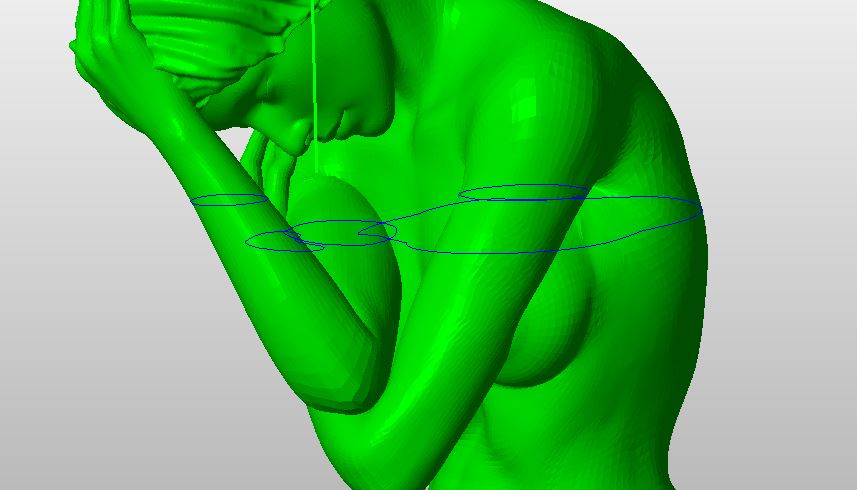As you will know, if you have read any of my previous posts, I enjoy the challenge of trying to create beautiful sculptures by posing a 3D model to match either an existing photograph or an image that I have in mind. One of the aspects I have spent less time on is adjusting the shape of the woman's body. I received a comment from a reader asking whether I ever sculpted larger women and I had to admit that I hadn't tried yet, so this time I thought I would deviate from the default, skinny model body shape and try creating a woman who looks more typically average in body size.
I used the Victoria 6 body with the HD mesh add-on, which has more natural curves around the joints. I began with an idea for a pose in a fairly relaxed style and then played around with all the different character shape parameters , giving a modest 20% increase to the 'Heavy' setting and a 70% boost to the 'Weight' parameter. I'm not entirely sure what the difference is but it's quite an interactive process, so I just move the sliders slowly and stop when I see the effect I'm looking for.
Daz haven't just given permission for 3D printing of their models, they've simplified the whole process too. Upgrading to the latest version of the Genesis 2 models brings a new option to the Anatomy section.
This rather gruesome-looking add-on modifies the geometry of the eyes and mouth, turning them into closed meshes. It also replaces the front of the eye with a new, more sculptural representation of the iris and pupil.
I chose an elegant, raised hairstyle that still required my previously-described shrink-wrap technique to make a fully printable model.
The pose would clearly need support material turned on in several areas, as can be seen in the print below.

Overall, a very satisfying project.



















































